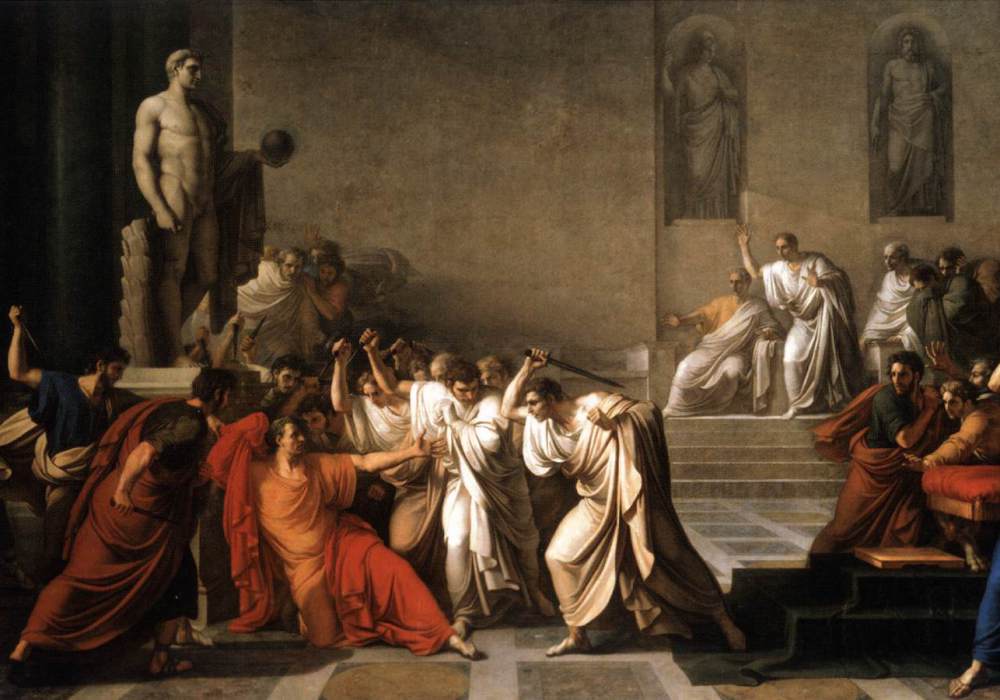The ides of March represent a turning point in Roman history, marking the transition to the Roman Empire. Caesar had defeated and pardoned many of his enemies, concentrated in his hands an absolute power seeking to became a king in Rome, and a god after his death.
Deceived old friends who had expected to get more from him and old enemies who dreamt to save the Republic had one last chance of achieving their project in this fatal day, dedicated to Anna Perenna, a goddess of the year (Latin annus) whose festival originally concluded the ceremonies of the new year (in the primitive Roman calendar March was the first month). Three days later Caesar would have gone East to conquer the rest of the world.
The conspirators staged a game of gladiatorial combats at Pompey’s theater, by the temporary seat of the Senate. Caesar had a nightmare that night and some time before a seer had prevented him of a danger at the ides of March. On his way to the Senate he met the seer once again, and when he claimed that that day had come with no harm, he was answered that the day was not over yet.
When he stepped in, he was approached by a senator pretending to beg for the return of his exiled brother: that was the signal – the conspirators crowded all around him and senator Casca gave the first strike. Caesar hit him with his stylus but when he realized he was surrounded he simply wrapped his head and pulled down his mantel to cover the feet in order to fall with dignity. 23 times he was stabbed but only one was the mortal touch that cut his aorta in the chest. Everybody run away, and dead Caesar was left alone for hours, until three slaves came to get his body. Silence was all around as the citizen locked themselves at home as the news spread. Anthony was spared because the conspirators had decided that the death of a single tyrant would be more symbolically effective than a massacre.
You can live back this day with the historical commemoration that takes place every year, March 15th at Largo Argentina, the archeological area where this enormous fact happened. Every other day of the year you can visit the GNAM if you wish to see the beautiful painting inspired by Caesar’s assassination, together with many other masterpieces in Italy’s largest collection of modern and contemporary art.
About Alessia, independent tour guide in IT.

Hi! I'm Alessia and I was born in the area of the Roman Castles, region of the legendary Romulus, big ponitfical villas and good wine.
It is perhaps for this reason that growing up I have developed a great love for archaeology that represents my cultural background, completed with studies in Art History that allowed me getting my license as official tour guide of Rome and Vatican city in 2010.
I'm also a wine taster in AIS (Italian Association of Sommeliers) and a gourmand, but after all I
Contact Alessia



